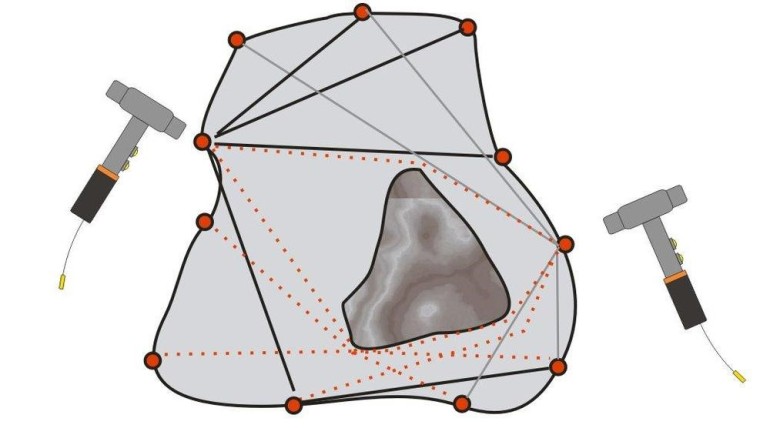The PiCUS Sonic Tomograph (Argus Electronic) identifies internal hollows and incipient decay within trees by measuring the velocity of sound waves, the basic premise being that sound waves take longer to travel through decayed wood than sound solid timber. These sound waves are triangulated through repetition of the sound from multiple locations on the trunk, eventually building a cross sectional image of the internal cavity. The slow and fast traverse times of the sound waves are compared against each other rather than an external sound specimen meaning no prior calibration is required. Furthermore, if readings are taken from multiple heights the accompanying software to the device can create a 3D image of the decay column. It must be noted that although sonic tomography can detect decay it cannot differentiate between the decay itself and internal cracks (WANG & ALLISON, 2008). Additionally, ring shakes (a defect in trees consisting of shrinkage and separation of the annual rings), voids (decay openings in the trunk) or compartmentalization (defensive reaction zones) may affect readings (VAN WASSENAER & MICHAEL RICHARDSON, 2009). Given that field testing has shown that sonic tomographycan over estimates the proliferation of internal decay (LIANG, WANG, WIEDENBECK, CAI, & FU, 2008), and is affected by none round tree geometry (SCHWARZE, RABE, FERNER, & FINK, 2004), it necessarily follows that robust conclusions regarding a trees stability can only be made when in conjunction with other forms of diagnostic equipment. Despite these negative suppositions, it must be noted that sonic tomography can successfully detect decay and becomes more accurate with each additional directional sound wave (and sensor) employed.

(Source: Angus Electric)

(Source: Angus Electric)

Sound waves are triangulated through repetition of the sound from multiple locations on the trunk.
(Source: Angus Electric)

(Source: Angus Electric)